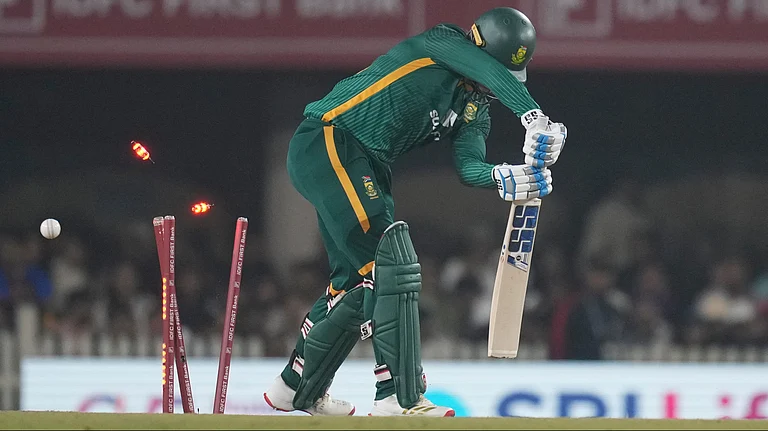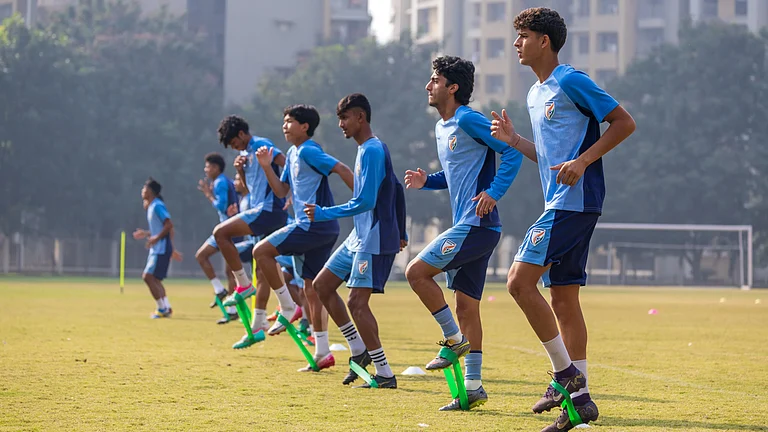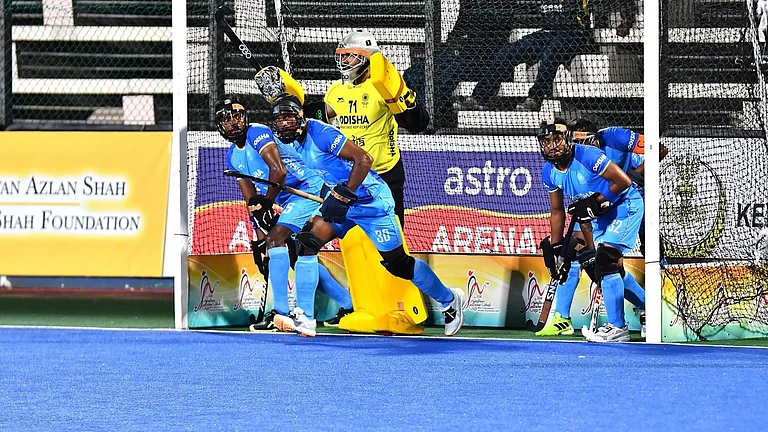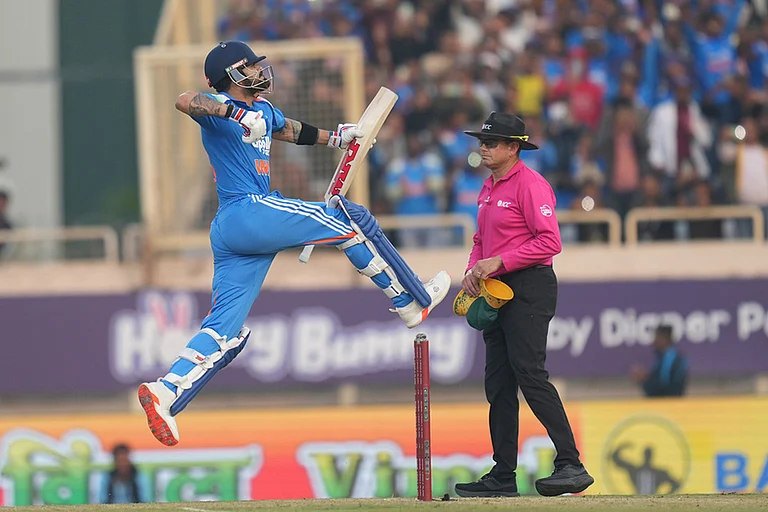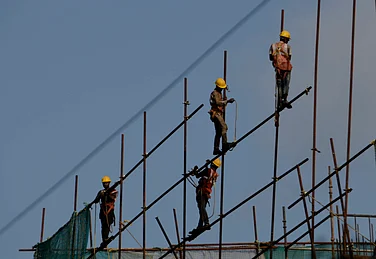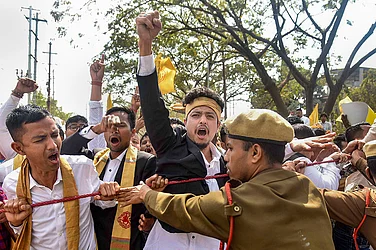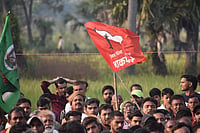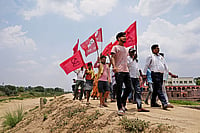On March 24, 2020, the day the lockdown was announced, 50 people were gathered in a 25x10 foot, tile-roofed room in the Null Bazar area of posh South Mumbai. Little did they know that they would end up spending the next three months locked up in the tiny room.
These migrant workers hailed from Chhitmadhabpur village in Raiganj block of Uttar Dinajpur district in West Bengal and had been living and working in Mumbai before the lockdown. Every morning, they would gather at the local market near Gol Deval Mandir, a spot from where people and contractors ‘picked up’ construction workers and daily wagers for different projects.
Among the 50 workers who involuntarily ended up sharing space for months were the four Ali brothers—Rajiful, Rejaul, Rejibet and Ajimuddin. Back home, they had the luxury of living in a decent set-up with their parents, wives, and children. But whenever they moved to Mumbai for work, they ended up sharing space with other young and middle-aged men, all from the same village back home.
“It was summer. Fifty persons sharing that space throughout the day and night challenged our limits of tolerance,” says Rajiful.
Rajiful, who first came to Mumbai 12 years ago, has his own team of workers. A labour contractor, he employs others from his village as per the requirement. They stay together to save money and send most of their earnings home.
They managed to return home at the end of May 2020. “The West Bengal government did nothing apart from arranging a train for us from Maharashtra,” says Rajiful. The much-awaited homecoming turned out to be a bitter experience. Their neighbours did not allow them to enter the village. They had to stay for a week under a tent on a field adjacent to the village. There was no work in the coming months. Towards the end of 2020, as soon as the Maharashtra government allowed construction work to resume, they moved back to Mumbai.
Difference In Wages
According to Rajiful, in Mumbai, bricklayers earn Rs 1,000, tile workers earn Rs 1,400 and labourers earn Rs 700 in a day. “There is no guarantee that one gets work every day, but even if one manages to work for 20 days and earns Rs 20, 000 a month, one can send Rs 12-13,000 home. In our home state, we can’t even earn Rs 8,000 a month,” he says.
In the North Bengal region, a bricklayer gets paid Rs 400 a day. This explains why nearly all employable young and middle-aged men in their village either work in the construction industry in Mumbai or hotels and eateries in Saharanpur in Uttar Pradesh. People from Kumarjol, their neighbouring village, have been migrating to Kashmir.
This issue of migration is not limited to their district. Almost all districts in Northern and Central West Bengal, including Darjeeling, Jalpaiguri, Kalimpong, Alipurduar, Cooch Behar, Uttar Dinajpur, Dakshin Dinajpur, Malda and Murshidabad, are home to thousands of people who migrate to different states across the country in search of work.
Migration Woes
There is no proper estimate of the extent of work-related migration from West Bengal. There is no reliable data either to confirm or indicate migration has increased during the 12-year rule of Mamata Banerjee’s Trinamool Congress (TMC). Banerjee had said in June 2020 that over 10 lakh migrant workers had returned home since the lockdown, but this number does not reflect the actual extent, researchers had argued.
The CPI(M), the state’s former ruling party, had previously claimed that it was after observing the growing trend of out-bound migration during the 1990s following a stagnation in agricultural income that the Buddhadeb Bhattacharjee government embarked on its industrial drive in 2006–a drive that ultimately cost them state power due to widespread anti-displacement movements.
The party blamed Banerjee for ‘destructive politics’ and ruining the state’s industrialisation opportunities. Apart from the CPI(M), the BJP and the Congress, too, have blamed Banerjee’s government’s failure in drawing industrial investment to the state for a perceptible increase in work-related migration.
The TMC has, on the other hand, claimed that they have created more jobs in the rural areas through the Micro, Small & Medium Enterprises (MSME) sector than during the Left regime.
When the extent of migration came to public knowledge due to the lockdown in 2020, the chief minister announced a series of measures.
One of them was sending one-time support of Rs 1,000 to the bank accounts of migrant workers stranded in other states. The others included prioritising giving work under the Mahatma Gandhi National Rural Employment Guarantee Act (MGNREGA) scheme to migrant returnees and creating a database of migrant workers.
The administration was to offer them suitable opportunities closer to home. She also realised the need for generating job opportunities and promised to create 1.5 crore jobs over the next five years if she returned to power in 2021.
Nothing, however, has changed for the likes of Tajul Sheikh and SK Menaul from Malda district.
Migration Continues
Sheikh, 40, who works in the electricity transmission sector, received Rs 1,000 and he managed to return home from Karnataka where he was stranded. Upon his arrival, the panchayat and block development office took the names and contact numbers of all those who had arrived. “We had to be back in Karnataka as soon as the lockdown was lifted, as there was no work back home. We have not heard from the administration since then regarding any scope of work there,” he says.
He is currently engaged in a project at Jagalur town in Davangere district of Karnataka. He has three brothers. All of them work in Karnataka in the same sector. According to him, about 5,000 people from his gram panchayat area alone migrate for work to the southern and western states.
“If there was work, why would I be living away from home 10 months in a year? My wife is raising our three children aged 13, 8 and 5 all alone,” says SK Menaul, who is from the Ratua area of Malda. “Who doesn’t like to stay close to children? A large number of migrant workers will not migrate if they get a chance to earn about Rs 14-15,000 a month,” he adds.
He is currently working in Yadgir district of Karnataka at an electric substation, a sector in which he has been involved for the past 10 years. Both his brothers are also there. However, while Menaul has got a small accommodation from the construction company, his brothers are living in ‘labour camps’–small tents set up at the site. In this sector, one can earn between Rs 15,000 and Rs 30,000, he said, but there was no such opportunity closer home.
Centre-State Tussle
According to Anuradha Talwar, migration has visibly increased in the post-lockdown period, owing chiefly to the non-payment of MGNREGA wages for several months. Talwar heads the Paschimbanga Khet Majoor Samiti, an organisation for agriculture labourers, and also works in the sphere of workers’ rights.
“Increasing the MGNREGA budget could have been an ideal way to check work-related migration, but the Union government had exactly the opposite idea. They curtailed the MGNREGA budget to encourage rural to urban migration to ensure easy availability of cheap labour in industries and urban areas,” she says and adds the West Bengal government has no plan in place to mitigate the impacts of the Modi government’s move.
The situation in West Bengal has worsened in the post-pandemic scenario, as the Centre has not paid the state its MGNREGA dues since December 2021, alleging corruption and anomalies on the part of the state government.
The state has been banking on this scheme to generate rural jobs and bagged the first position in the country in implementing MGNREGA for ‘Convergence and Livelihood Augmentation’ for four years on a trot since 2015-16. The chief minister had announced a two-day protest in Kolkata from March 29 to protest the Centre’s move on MGNREGA payment.
“For the past 15 months, there has been no MGNREGA payment. The state has dues of Rs 2,744 crore from the Centre. It’s unacceptable that the Centre and state would fail to sort it out in 15 months and make people suffer. Now, even those in their mid and late teens are dropping out and migrating for work,” says Talwar.
Though the West Bengal government on March 27 approved setting up the Migrant Workers’ Welfare Board, whether this too would remain just another promise ahead of a crucial panchayat election remains to be seen.
(This appeared in the print as "Plight of West Bengal Migrants")







